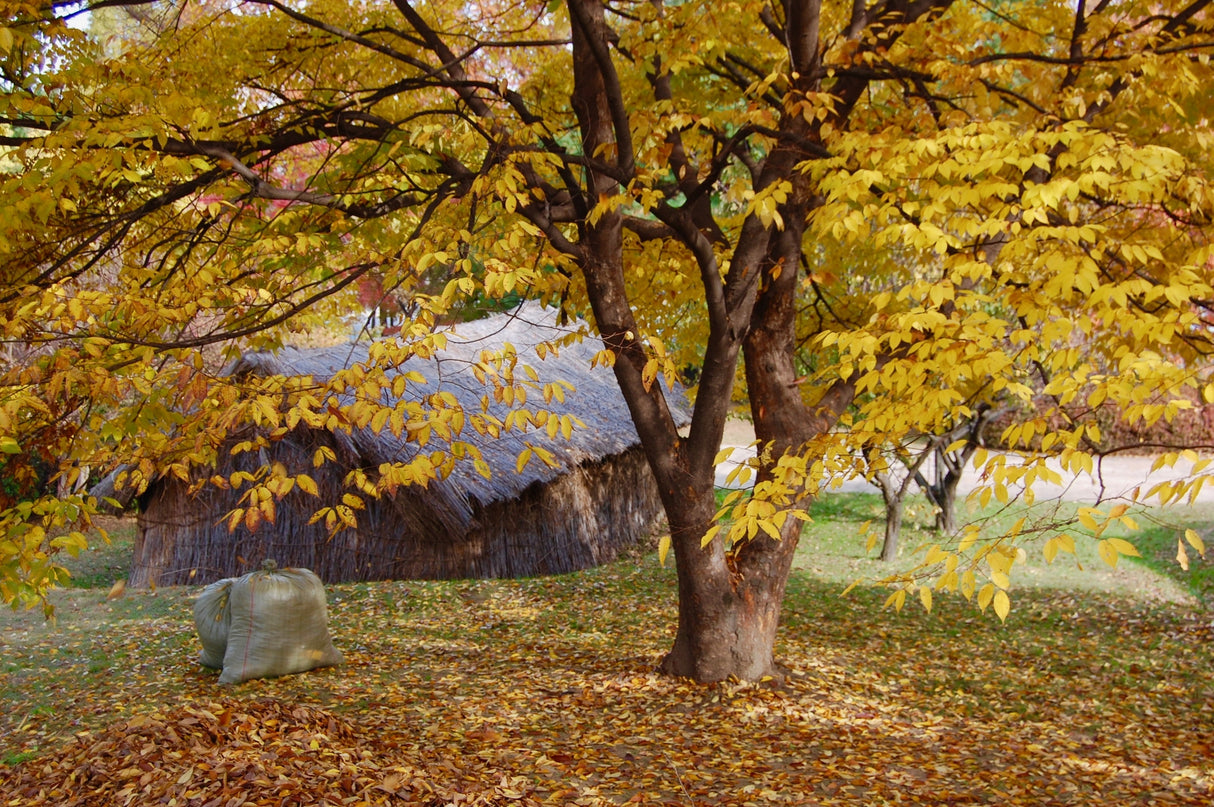Zelkova serrata
The Zelkova serrata, or Japanese Elm, is a graceful deciduous tree renowned for its striking vase-shaped form, smooth grey bark, and finely serrated leaves that turn brilliant shades of orange, yellow, and red in autumn. Growing up to 20 meters, this hardy and adaptable tree is an excellent choice for shade, avenue planting, or as a feature tree in large gardens and landscapes.
Specifications:
- Height: 15–20 meters
- Width: 10–15 meters
- Native to: Japan, China, and Korea
- Foliage: Finely serrated, dark green leaves turning vibrant autumn colors
- Growth rate: Moderate to fast
Conditions:
- Soil: Prefers well-drained soils; tolerates sandy, loamy, and clay types
- Light: Full sun
- Water: Moderate; drought-tolerant once established
- Climate: Thrives in temperate and subtropical regions
Additional Features:
- Form: Elegant vase-shaped growth with a spreading canopy
- Uses: Ideal for shade, avenue planting, or as a feature tree
- Spacing: Plant 8–12 meters apart for avenues or open spaces
- Low Maintenance: Requires minimal care; prune to shape if needed
- Pest Resistance: Generally resilient to pests and diseases
- Drought Tolerance: High; suitable for waterwise gardens once established
- Frost Tolerance: Hardy to moderate frost
- Seasonal Appeal: Vibrant autumn foliage and attractive smooth bark add year-round interest
- Environmental Benefits: Provides shade, stabilizes soil, and supports local wildlife
- Versatility: Complements formal, naturalistic, and modern garden styles
The Japanese Elm is a magnificent and versatile tree, combining aesthetic appeal with durability, making it a standout addition to large landscapes.
The Benefits Of Buying An Advanced Tree
The Process Of Transplanting A Mature Tree
Identify the Tree's Root Zone
Identify the Tree's Root Zone
Before you begin, it's essential to identify the root zone or root ball of the tree. This is the area where the majority of the tree's feeder roots are located. It is typically estimated as 1 foot of root ball diameter for each inch of tree trunk diameter.
Prune the Roots
Prune the Roots
Root pruning should occur a few months before the actual move, ideally in the dormant season. This involves cutting a trench around the root zone to encourage the growth of new feeder roots, which will help the tree to establish itself in its new location.
Prepare the Tree
Prepare the Tree
Prior to digging, prune dead or excessive branches from the tree. This reduces the tree's overall mass, making it easier to handle, and decreases water loss post-transplant.
Dig Around the Root Ball
Dig Around the Root Ball
After determining the root ball's size, begin digging around it. Try to retain as much soil around the roots as possible. The depth should ideally get under the root system but be feasible for lifting.
Undercut the Root Ball
Undercut the Root Ball
Once you've dug around the periphery of the root ball, begin undercutting to sever the remaining roots beneath it.
Lift the Tree
Lift the Tree
With the root ball freed, carefully lift the tree out of the hole. For large trees, this will likely require machinery like a tree spade or crane. Always lift the tree by the root ball, not the trunk.
Prepare the Tree for Transport
Prepare the Tree for Transport
Once the tree is out of the ground, it's critical to protect the root ball to prevent damage. Wrap it in burlap and secure it with twine, wire or steel basket. This not only holds the root ball together but also helps retain moisture.
Water the Root Ball
Water the Root Ball
Prior to transportation, water the root ball thoroughly to ensure the roots stay moist.
Transporting the Tree
Transporting the Tree
Load the tree carefully onto a truck or trailer for transport. The tree should be securely positioned to avoid damage during transit. The tree should ideally be planted in its new location as soon as possible to minimize stress and increase its chance of survival.


